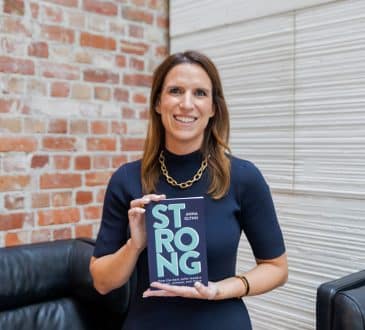HOW HELPING EMPLOYEES HAVE FUN TOGETHER CAN BENEFIT THE BOTTOM LINE

You can’t expect your job to be 100 percent enjoyable all the time, of course. It’s work, generally defined as the exertion of mental or physical energy. Things that are relaxing and easy, like watching Netflix, usually do not include a salary. But while work can be taxing, it shouldn’t feel like an unrelenting grind. Work is part of your life, and a big part; most people spend more hours working than doing any other single activity. Finding fun at work is a way to build the connection between your work life and your personal life, and to thrive in each domain.
For leaders, helping employees have fun together can benefit the bottom line. Fun helps people build real relationships, a key to productivity in many of today’s collaborative work environments and industries. Employees are also likely to spend more time in the office if they’re having fun, and to stay with the company longer. Having fun even leads to more creativity.
For all these reasons, many of today’s top companies have campus- like environments to improve the experience of being at work. Twitter San Francisco has a rooftop garden with a corn hole game set. Microsoft has beach volleyball and electric cars. DropBox offers amazing chefs and meals, with beer and wine, and encourages people to hang out over dinner with colleagues, and even to bring their families. At Google, in addition to getting significant benefits such as paid parental leave, employees at campuses around the globe can play ping pong and video games, listen to jukeboxes, and use whimsical office upgrades, such as a slide in San Francisco and an indoor basketball court in Zürich. Employees in some offices can get in-house massages, work out in a rock-climbing gym and grab free lunch from high-end caterers.
At one of the early Google campuses in California, there were a few ‘conference bikes’, bright yellow or red bicycles built for seven, ostensibly designed for holding meetings while getting some fresh air. Everyone would grab a seat and start pedaling. The seats faced inward, allowing cyclists to theoretically discuss important issues while pumping their legs. If everyone pedaled, the bike moved. It was not actually conducive to a focused discussion, but it was novel and silly and fun, making it a great way to take a break with co-workers and let down your guard.
While tech firms are known for creating fun offices, plenty of other companies have also adopted this approach. Patagonia has bikes, volleyball courts and yoga classes on-site. PetSmart, Purina, Amazon, Ben & Jerry’s and Bissel allow employees to bring their dogs to work. Studies show that a furry friend can ease social interactions and reduce stress. In our post-pandemic world, with more employees wanting to work from home, companies will likely invest energy in making office spaces appealing — and functional for the collaborative work that’s harder to do when working from home. They will also likely invest in ways to have fun together remotely.
Whether or not your company offers games or gardens, you can increase your enjoyment of your job on your own. One way is to develop friendships at work. This often happens naturally; at the bank, a group of us who were new to New York and single would regularly go out to lunch or dinner together. Even if your office isn’t particularly social, chances are there’s at least one person you like there. Make the effort to foster a friendship.
In fields where collaboration is a key to success, some people see socializing as part of getting the job done. When Wendy Paris, my co-writer on my new book, was working as a production assistant at the PBS station in Houston, one of her first jobs in a long string of journalism jobs, she was struck by the efforts the crew made to connect socially. Wendy says:
Before a big shoot, the videographers would go out for beer and Star pizza, a Houston favorite. The next day on the set, they’d have all these inside jokes from the night before. The videographer I worked with the most often, a hugely talented guy, talked about how joking around over pizza helped him be creative the next day, and remember that this was a fun job and not ‘brain surgery’. It lowered the stress level about trying to do everything just right and let everyone be more focused in the moment.
The pandemic may have made it easier to break down barriers that inhibit connection in certain cases. ‘When you’re remote, you do need to have relationships with people [and] that in itself has forced people to open up a bit’, says Perth-based career coach Helen Holan. Seeing a co-worker’s living room (or closet) on Zoom, and sharing your own, can create a sense of intimacy and remind you of your common humanity. You may be able to build on this peek into another person’s life to help deepen a budding friendship.
Some people specifically choose jobs that offer a promising social life. If you’re hoping that work will help you make friends, consider applying to large companies that often need to do big hires all at once, such as Salesforce, IBM, or big legal and financial services firms. This guarantees that there will be other newcomers around, also looking to connect. You can even ask about the social environment during an interview, though as my recent-grad son, Zachary, and his friends have discovered, companies with large intakes of young people will often tell you about that fact early on, no questions needed.
Many people make lasting friendships at work, especially in the beginning of a career. Young people often work long hours together, have free time after work and haven’t yet formed numerous (sometimes demanding) adult social relationships.
Written by Aliza Knox.
Excerpted with permission from the publisher, Wiley, from Don’t Quit Your Day Job by Aliza Knox with Wendy Paris. Copyright © 2022 by John Wiley & Sons Australia, Ltd. All rights reserved. This book is available wherever books and eBooks are sold.
Have you read?
6 steps to help your team better receive feedback by Bernard Desmidt.
Living and Working the CEO Life by Robert (Bob) Ryan.
Million Dollar Identity: Barry Gabster is Wall Street Journal Best Selling.
Build a Better Company (and a Better You) by Implementing a Mentorship Program by Kristen Sieffer.
Add CEOWORLD magazine to your Google News feed.
Follow CEOWORLD magazine headlines on: Google News, LinkedIn, Twitter, and Facebook.
This report/news/ranking/statistics has been prepared only for general guidance on matters of interest and does not constitute professional advice. You should not act upon the information contained in this publication without obtaining specific professional advice. No representation or warranty (express or implied) is given as to the accuracy or completeness of the information contained in this publication, and, to the extent permitted by law, CEOWORLD magazine does not accept or assume any liability, responsibility or duty of care for any consequences of you or anyone else acting, or refraining to act, in reliance on the information contained in this publication or for any decision based on it.
Copyright 2024 The CEOWORLD magazine. All rights reserved. This material (and any extract from it) must not be copied, redistributed or placed on any website, without CEOWORLD magazine' prior written consent. For media queries, please contact: info@ceoworld.biz
SUBSCRIBE NEWSLETTER








